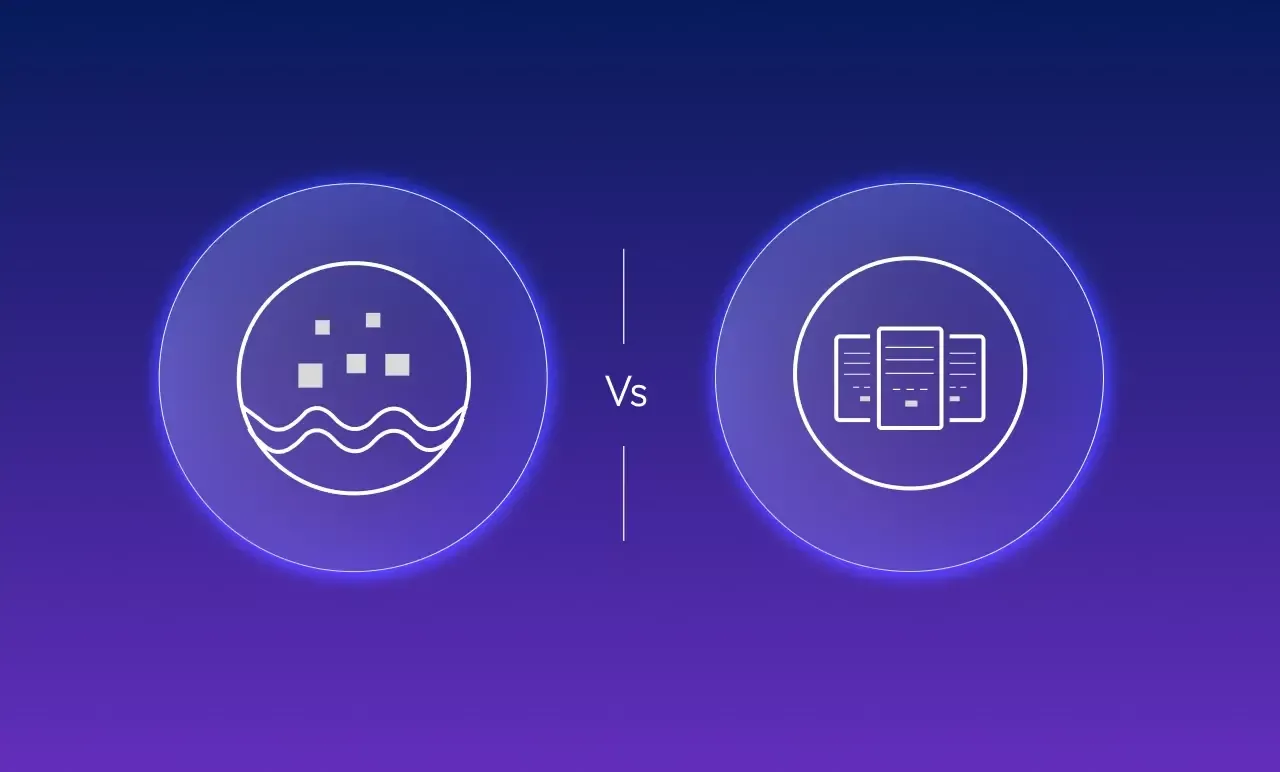Data Storage Decoded: Data Warehouse vs Data Lake Explained
Top 5 Insurance Industry Trends to Watch Out In 2024
Internally, this industry is plagued by issues like ever-evolving customer demands, enhanced risk exposure, changing regulatory compliances, and increased occurrences of fraud.
Adopting new digital trends is imperative if this sector wants to negate the effect of the above-mentioned factors. These trends also gain significance because they simplify the daily life of customers and employees alike by:
- Creating an intuitive, frictionless customer experience
- Reducing low-value, repetitive manual efforts put in by employees
- Implementing Integrated Risk Management(IRM) initiatives
The insurance sector is a late bloomer in the field of technology adoption. It has, however, progressed to adopting Data Analytics and data-generated insights. Leveraging them has helped this industry to understand customer needs and preferences and pinpoint new growth opportunities.
The ongoing digital transformation process, as illustrated by the integration of new technologies like IoT and AI, is making this sector increasingly competitive. Keeping up this momentum in 2024 will enable it to digitize the products and services offered, enhance customer engagement and drive inclusive sustainability
Additionally, for a perceptibly customer-centric industry, the ongoing tech transformation has exponentially escalated customer demands and made them more powerful. The ability to compare products for prices and suitability with just a few clicks has placed improving customer experience at the center of all upcoming insurance trends.
ESG compliance to remain a key focus

The insurance sector faces a unique issue. Along with being evaluated based on their sustainability reports, insurers are also appraised on initiates taken to address carbon emissions, enable workforce diversity and increase governance transparency
Government and other such authorities have even introduced compliances that make it imperative for insurers to transition to a low-carbon economy and initiate procedures to manage climate-related risks better.
Insurance companies are also swiftly realizing the commercial advantages of becoming Environmental, Social, and Governance(ESG) compliant. Statistics show that 85% of global insurers consider better ESG compliance necessary to transform brand reputation, investments, underwriting, risks & internal audits.
Consequently, ESG compliance is now a competitive differentiator, and insurers must proactively focus on implementing initiatives to meet ESG requirements.
Popularity of underwriting workbenches
Insurance underwriting refers to the process of assessing the risk potential of a customer. Underwriters have to analyze the business based on several factors, define the acceptability of the risk posed, and calculate a fair price for the coverage to be offered.
The criticality of the work involved makes underwriting ideal for implementing automation, thus giving rise to the concept of the underwriter workbench.
A centralized workspace containing a collection of all digital tools necessary for the successful execution of the underwriting process, is referred to as the underwriter’s workbench. They are a relatively novel concept.
Underwriters have recently realized the convenience of using digital tools to quicken the entire process and make it more accurate. Additionally, the widespread use of automation, Artificial Intelligence, and Machine Learning in other insurance processes has catalyzed the adoption of underwriter workbenches. This accounts for the rapid rise in its popularity in the recent past.
AI and process automation to lead from the front
The digital transformation of other sectors has given customers a taste of a frictionless and convenient experience. Today, they expect the same standards from the insurance sector. Hence, process automation is mandatory if this sector wants to meet these customer expectations quickly.
A report published by McKinsey predicts that by 2040, 55% of all insurance processes will be achieved using AI or Artificial Intelligence and ML or Machine Learning. McKinsey further states that automation will reduce the cost of a claim process by as much as 30%, which is substantial.
The start of this trend is already evident in the collaborations insurance carriers are building with insurtechs. Leveraging the AI-based business model of these insurtechs is helping insurance carriers to evolve and adapt to the rapidly transforming business landscape.
Capitalizing on the efficiencies generated by RPA, AI, Big Data, and Analytics will further help these carriers to streamline their operations and lower costs. They will also witness higher growth by meeting customer expectations and enhancing data security.
Further, AI, as a technology driver, is responsible for giving rise to a critical trend in the insurance sector. This trend will lead to the massive evolution of the insurance sector with large-scale integration of AI, automation, and deep learning.
Insurance players who evolve with this changing landscape will continue to thrive, but those still holding on to conventional systems might be forced to re-examine their strategies.
Partiality toward Low-Code development
The insurance sector primarily needs a user-friendly and efficient website that can enhance customer satisfaction. The affinity for low-code websites in the insurance sector is a direct outcome of this need.
Low-code websites typically have significantly fewer lines of code written compared to a traditional website. Such websites can be easily and quickly updated without undergoing the cumbersome website redevelopment process. With customers’ appetite for the latest information evolving rapidly, this accelerated time to market for insurance sector applications has proved a boon.
This is further corroborated by statistics as shared by Garter, which shows a growth of 22.6% in the market share of low-code digital insurance platform development. Alternatively, the development of high-end customized websites has declined by 23%. This proves the legitimacy of low-code development as a leading trend in the insurance sector for 2024.
Preference for self-service capabilities

Currently, most insurance companies utilize the services of call centers and other such channels to handle customer queries and requests. But with workflow digitization resulting in increased customer convenience, there is a perceptible preference for self-servicing capabilities. Irrespective of whether the insurer is tech-savvy, there is universal gravitation towards automated processes.
Today, customers want to self-manage policies, make premium payments, and raise and submit claims using self-service portals. With such high demand, insurance companies must upgrade their capabilities and opt for complete workflow digital transformation.
Opting for this trend will prove to be counterproductive as insurance companies will benefit from:
- Reduced customer acquisition costs
- High customer retention
- Increased insurance agent productivity
- Quicker and less costly claim processes
- Enhanced customer loyalty resulting in better referrals
Further, implementing data analytics will empower insurance companies with customer behavioral data. They can provide personalized services and offer real-time assistance based on the same.
The active adoption of the above trends for insurance digital transformation is no longer an option. It is a necessity that promises to lead the insurance sector toward offering enhanced customer experience, saving operational costs, and innovating products and services.
For a sector that has conventionally enjoyed stability and predictability, driving the above trends will help it to navigate the current uncertainties and achieve some semblance of the same stability and predictability.
Email us or Talk to us at +91-98367-81929 or Simply Contact Us through the website.
Let's Connect








